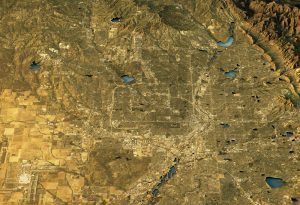NSF DBI: The strong, structured framework of biological sciences
- Thought Leaders
Take your mind back to 1950 – the year Walt Disney released his 12th animated film Cinderella, the year British entrepreneur Sir Richard Branson was born, and the year the American Congress decided to create the National Science Foundation (NSF).
Built on the principles of promoting the progress of science, advancing the national health, prosperity, and welfare, and securing the national defence, the NSF supports basic research and the people capable of transforming the future.
Alongside their $7.5 billion annual budget, the institution is responsible for funding approximately 24% of all federally-supported basic research conducted by America’s colleges and universities. This spans across numerous areas of science, including: biological sciences, engineering, environmental research, education and geosciences – amongst many others.
The DBI
Within the biological science branch of the NSF’s funding lies The Division of Biological Infrastructure (DBI) – an organisation responsible for empowering biological discovery via investments in the “development and enhancement of biological research resources, human capital, and biology centers and other mid-to-large scale infrastructure”.
The Division of Biological Infrastructure funds numerous programmes to support advances in all aspects of biological research![]()
This provision of infrastructure for contemporary research in biology splits down further into two key areas: research resources and human resources. Research resources support includes the improvement and computerisation of research collections, living stock collections, and research facility improvements at biological field stations and marine laboratories. Human resources support includes research experiences and mentoring for undergraduates, cross-disciplinary research at undergraduate institutions, and, in selected disciplines, postdoctoral research fellowships.
Programming success
Within each of these areas, the DBI funds numerous programmes to support advances in all aspects of biological research. These include collaborations with universities and other institutions, utilising widespread researcher expertise and NSF-derived funding – across a wide range of areas.


Another example comes from DBI’s Advances in Biological Informatics (ABI) programme, encouraging new approaches to analyse and disseminate biological knowledge for both the scientific community and the wider public. The differences between each of these programmes’ aims simply highlight the expansive range of biological areas supported and funded by the DBI.
Meet the director
Dr Muriel Poston is the Division Director who has been at the helm of DBI’s successes throughout the years. Alongside her role as Professor of Environmental Analysis at Pitzer College, she has been responsible for developing programmes that focus on enhancing infrastructure for biological research collections, research instrumentation, and field station facilities.
Following funding
Dr Poston’s role as Division Director also provides her with the responsibility of NSF DBI’s budget, deciding which countries and projects to designate financial support towards.
The DBI currently support over 1000 research awards, providing an
estimated $826 million worth of funding![]()
![]()
![]()
According to the data on their website (www.nsf.gov), the DBI largely focus this funding on American-based research – with the exception of two awards in Bermuda and the United Kingdom.
Their budget currently supports over 1000 research awards – 134 in California – and provides an estimated $826 million worth of funding. That translates to approximately 11% of the NSF’s total budget.
A successful past to a successful future
Dr Poston and the DBI are providing science with an opportunity to move forward and answer some fundamental unanswered questions.
Not only that, but they are also looking after the future of biological science while they’re at it, by funding and supporting programmes seeking to develop the next wave of researchers.
In the 67 years since NSF’s inception, NSF-funded research has continually nurtured the global understanding of science.
Throughout their work across their divisional branches, the NSF has shaped the past and present of biological research – and looks set to shape its future as well.
• To find out any more information about the NSF or the DBI in general, please visit their affiliated websites at www.nsf.gov and www.nsf.gov/div/index.jsp?div=DBI, respectively.
NSF is founded following the National Science Foundation act with Harry Truman appointing Alan T Waterman as its first Director. The initial budget was $151,000.
1958
NSF established a working relationship with NASA under the agreement that it would provide virtually all the US federal support for ground-based astronomy, whereas NASA would be responsible for space-based astronomy.
1960
Foundation of the ‘Institutional Support Program’ focused on building research infrastructure among US universities.
1968
Start of the Deep Sea Drilling Project which revealed evidence for the concepts of continental drift and sea floor spreading. The NSF’s budget at this point was $500 million.
1972
NSF take over management of 12 materials research laboratories from the Defense Department’s Advanced Research Projects Agency (DARPA).
1983
NSF budget tops $1 billion for the first time.
1985
NSF delivers ozone sensors to researchers at the South Pole to measure stratospheric ozone loss.
1990
NSF budget passes $2 billion.
1993
NSF-supported National Center for Supercomputing Applications develop Mosaic – the first freely available web browser, responsible for popularising the World Wide Web.
1994
In collaboration with DARPA and NASA, NSF launch the Digital Library Initiative. A grant is offered to Larry Page and Sergey Brin at Stanford University who develop an internet search engine later known as Google.
1996
NSF-funded research determines substantial abnormalities in the atmospheric ozone hole above Antarctica.
1998
NSF-funded astronomers discover that a force, known as ‘dark energy’, is driving the galaxies apart at an ever-increasing rate.
2000
NSF join with several other agencies to take part in the National Nanotechnology Initiative and pledge a $300 million annual investment into nanotechnology research.
2001
NSF budget passes $4 billion.
2004
NSF sends rapid response research teams to investigate the aftermath of the Indian Ocean tsunami and Hurricane Katrina.
2005
NSF budget stands at $5.6 billion.
2013
NSF budget stands at $7.4 billion but suffers a temporary lapse of funding in October, due to the shutdown of the Federal Government.
2014
NSF awards rapid response grants to investigate a chemical spill that contaminated drinking water for over 300,000 West Virginia residents.


National Science Foundation Division of Biological Infrastructure
4201 Wilson Boulevard
Arlington
VA 22230
Virginia
USA
E: [email protected]
T: +1 (703) 292-8470
W: www.nsf.gov/div/index.jsp?div=DBI
Creative Commons Licence
(CC BY-NC-ND 4.0) This work is licensed under a Creative Commons Attribution-NonCommercial-NoDerivatives 4.0 International License. Creative Commons License

What does this mean?
Share: You can copy and redistribute the material in any medium or format








Primary Ovarian Insufficiency: A new paradigm for care and research




A rest stop on the unending road to provable security




